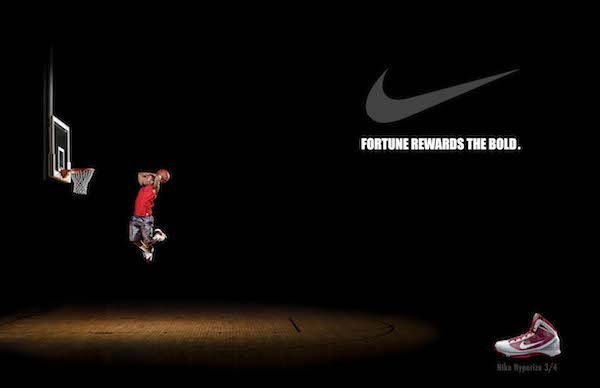BASIC PERSUASION
TECHNIQUES
1). Association - This
persuasion techniques tries to link a product, service or idea with something
already liked or desired by the target audience, such as fun, pleasure, beauty,
security, intimacy, success, wealth, etc. this process is known as emotional
transfer.
Examples:

reason: i choose this ads because it's the brand which people already known.
2). Bandwagon. this is a
specific type of propaganda advertising technique that tries to get
the target audience to jump on board, so as to not "miss out" on what
everyone else is doing.
Exmples :


reason: because the brands it's always update a new product, and people always want to buy it.
3). Beautiful people. Uses
good-looking models/ celebrities to attract our attention. which may also imply
that we'll look like the models if we use it.
Examples:
reason: because the ads using good-looking models to promote the product.
4). Bribery. this
techniques is trying to persuade us to buy a product by promising to give us
something else, like a discount, a rebate, a coupon, or a"free gift".
Sales, special offers, contest, and sweepstakes are all form of bribery. Unfortunately,
we don't get something for free.
Examples:
reason: because in the ads they said "buy 1 get 1"
5). Celebrities. This is
kind of ads which often uses celebrities to grab our attention. By
appearing in an ad, celebrities implicitly endorse a product to pay our
attention to famous people.
reason: because the ads is using celebrities / famous people to promote the product
6) Experts. we rarely
expert to advise us about things that we dont't know ourselves. Professor,
Doctor, Scientist, and other professional often appear in ads. But sometimes
"Plain Folks" can also be expert, as when a mother endorse a brand of
baby powder, or a construction worker endorse a treatment for sore muscles.
Examples:
7) Explicit claims is
where there is a clear statement that leaves nothing implied. or we can say it
as directly, fully, or clearly expressed or demonstrated. So are specific,
measurable promises about quality, effectiveness, or reliability, like
"Works in inly five minutes!". Explicit claims can be proven true or
false through close examination or testing.
Examples:
Reason: in this
advertisement, they promised about the performances of the product, and it can
attract people to buy the product.
8). Fear. This is
the opposite of the Association technique. It uses something
dislike or feared by the intended audience (like bad breath, failure, high
taxes or terrorism) to promote a solution to fix the problem.
Examples:
reason: because there's a fear in the ads
9). Humor. Many ads uss
humor becaus it grabs more attention and it's powerful persuasion techniques.
When we laugh, we feel good. Advertiseers make us laugh and then show us to
their product or logo because they're trying to connect that good feeling to
their product. Advocacy messages rarely use humor because itcan undermine their
credibility; an axception is political satire.
Examples:
Reason: because i think it's have a humor sides.
10). Intensity. The
language of ads is full of intesifiers, including superlatives (greates,
best, most, fastes, lower prices), comparatives (more, better,
than, improved, increased, fewer calories), Hyperbole (amazing,
incridible, forver), exaggeration, and many other ways
to hype the product.
Examples:
reason: because there's superlatives words
11). Maybe. Unproven,
exaggerated or outrageous, claims are commonly preceded by "weasel
words" such as may, might, can, could, some, many, often, virtually, as
many as, or up to. watch for these words if an offer seems too good to be true.
Commonly, the intensity and maybe techniques
are used together, making the whole thing meaningless.
Examples:
Examples:
reason:because it's make people believe with the words
12). Plain folks. (A
type of Testimonial - the opposite of Celebrities.)
This techniques works because we may believe a "regular person" more
than intellectual or a highly-paid Celebrity.
Examples:
Reason: because the ads is using unfamous people
13). Repetition. Advertisers
use repetition in to ways: Within an ad or advocacy message, words, sounds, or
images may be repeated ti reinforcethe main point. And the message itself (a TV
comercial, a billboard, a website banner ad) maybe displayed many times.
Examples:
Reason: because the ads is repeating the word and the image
14). Testimonial. Media
messages often show people testifying about the value or quality of a product,
or endorsing an idea. Thay can be experts, celebrities, or plain folks. We tend
to believe them because they appear to be neutral third party (a pop star, for
example, not the lipstick maker, or a community member instead of the
politician running for office.) This techique works best when it seems like the
person "testifying" is doing so because they genuinely like the
product or agree with the idea.
Examples:

Reason: This ads makes people
believe and want to try the product/ services
15). Warm & fuzzy. This technique uses sentimental images (especially of families, kids and animals) to stimulate feelings of pleasure, comfort, and delight. It may also include the use of shooting music, pleasant voices, and evocative word like "cozy" or "cuddly."
15). Warm & fuzzy. This technique uses sentimental images (especially of families, kids and animals) to stimulate feelings of pleasure, comfort, and delight. It may also include the use of shooting music, pleasant voices, and evocative word like "cozy" or "cuddly."
Examples: